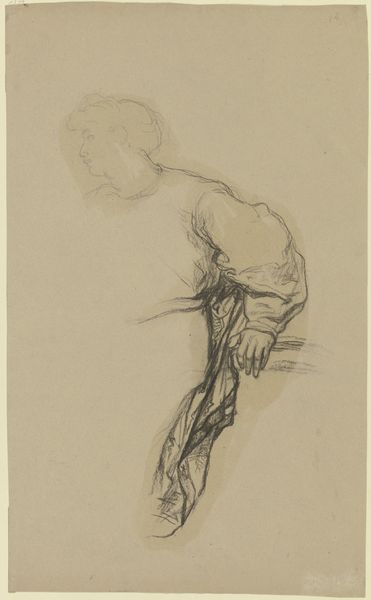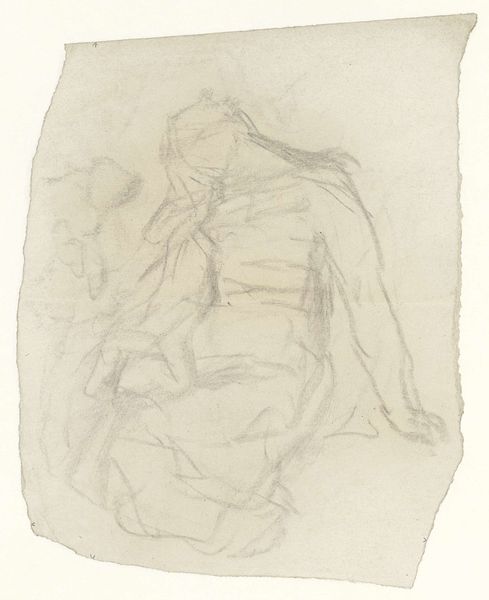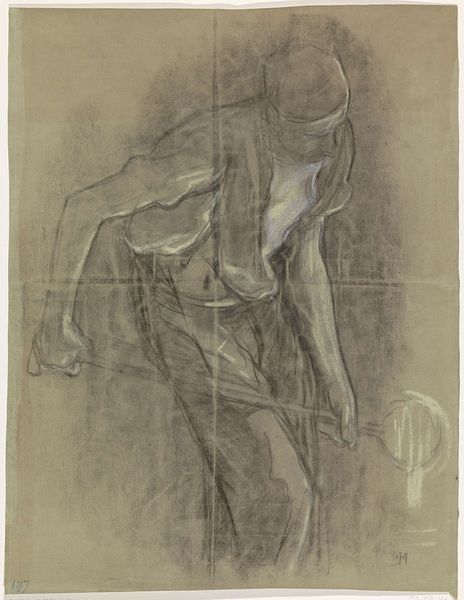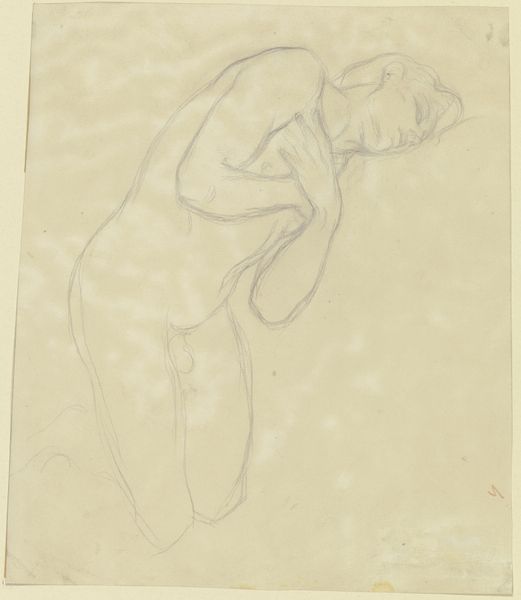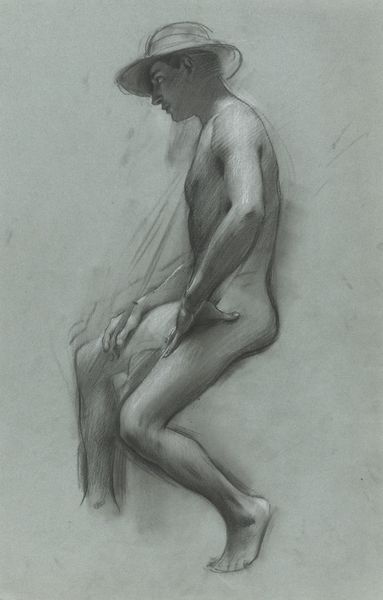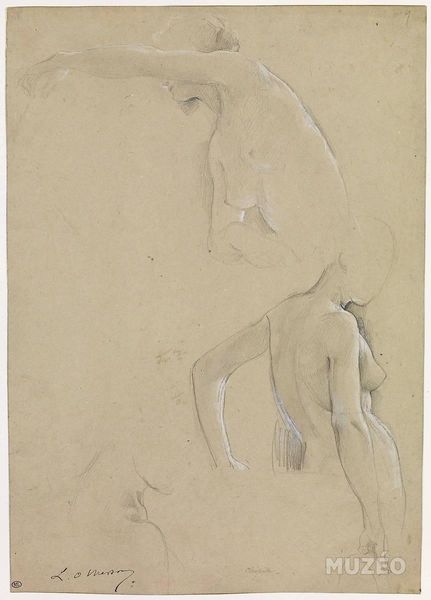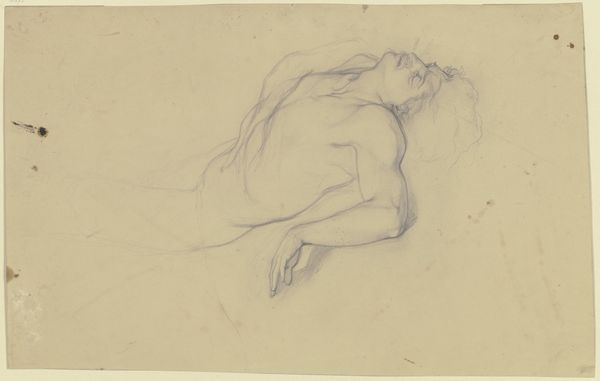
Dimensions: 19 7/16 x 12 9/16 in. (49.4 x 31.9 cm)
Copyright: Public Domain
Curator: At first glance, the work radiates a somber mood, an intimate space formed by pale washes that focus us intently on the lone figure at its center. Editor: Indeed. This is a pencil and watercolor drawing by Auguste Rodin, titled "Nude female figure holding left foot." It was likely created sometime between 1900 and 1912. Curator: Note Rodin’s strategic use of line here. The pencil strokes are loose, almost frantic, creating movement and suggesting forms rather than rigidly defining them. See, for instance, how he outlines the contours of the back and leg, repeating and layering them. Editor: Rodin often presented the body as fragmented or incomplete, inviting the viewer to participate in constructing its meaning. He was interested in the dynamism of form, representing subjects who possessed an anti-establishment quality during his period. This is, after all, the period when Rodin struggles to have his Balzac accepted in Paris. Curator: Precisely. Observe, also, how the watercolor wash softens the harsher lines, almost dissolving the figure into the background. This blurring effect contributes to the artwork's overall impression of fragility and transience, consistent with impressionistic and romantic aesthetics of the time. The palette, limited to earth tones and muted blues, is rather subdued. Editor: Well, this sort of preliminary anatomical sketch would have functioned both as a record and as a kind of declaration for the artist himself. By depicting nudes so openly, Rodin tested and expanded public acceptance for representing unidealized forms in art. The act of capturing fleeting moments aligns perfectly with Rodin’s ambition. Curator: Considering Rodin's oeuvre, "Nude female figure holding left foot" stands out for me because of its minimalist qualities. Despite its simplicity, it profoundly encapsulates the artist’s preoccupation with movement and human form. Editor: I agree. Seeing the artwork through a socio-historical lens emphasizes its role in transforming cultural norms for portraying human subjects. Thank you for your attention to Rodin's profound, almost revolutionary imagery.
Comments
No comments
Be the first to comment and join the conversation on the ultimate creative platform.


